Sardinian wine is Italian wine produced on the island of Sardinia. [1]
Contents

Sardinian wine is Italian wine produced on the island of Sardinia. [1]




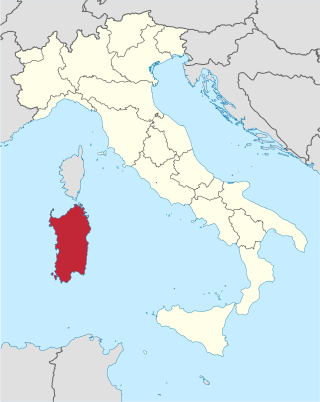
Sardinia is the second-largest island in the Mediterranean Sea, after Sicily, and one of the twenty regions of Italy. It is located west of the Italian Peninsula, north of Tunisia and immediately south of the French island of Corsica.

The Judicates, in English also referred to as Sardinian Kingdoms, Sardinian Judgedoms or Judicatures, were independent states that took power in Sardinia in the Middle Ages, between the ninth and fifteenth centuries. They were sovereign states with summa potestas, each with a ruler called judge, with the powers of a king.
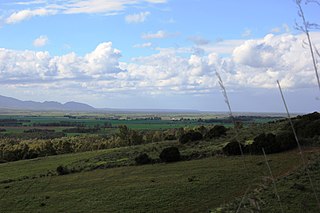
The province of Oristano is a province in the autonomous island region of Sardinia, Italy. Its capital is the city of Oristano. It has an area of 3,040 square kilometres (1,170 sq mi), a total population of 160,746 (2016), and a population density of 53.7 people per square kilometer. There are 87 comuni in the province.

Vermentino is a light-skinned wine grape variety, primarily found in Italian wine. It is widely planted in both Sardinia and Liguria, to some extent in Corsica, in Piedmont under the name Favorita, and in increasing amounts in Languedoc-Roussillon. The leaves are dark green and pentagonal. The grapes are amber-yellow and hang in pyramidal bunches. The vines are often grown on slopes facing the sea where they can benefit from the additional reflected light. The Vitis International Variety Catalogue now gives Italy as its origin.
Onifai is a comune (municipality) in the Province of Nuoro in the Italian region of Sardinia, located about 200 kilometres (120 mi) north of Cagliari, about 40 kilometres (25 mi) east of Nuoro and just 5 kilometres (3 mi) inland from the gulf of Orosei. The economy is based on agriculture and shepherding. Onifai is well known for its pecorino cheese and vernaccia wine made with Cannonau grapes. As of 31 December 2004, it had a population of 765 and an area of 43.0 square kilometres (16.6 sq mi).
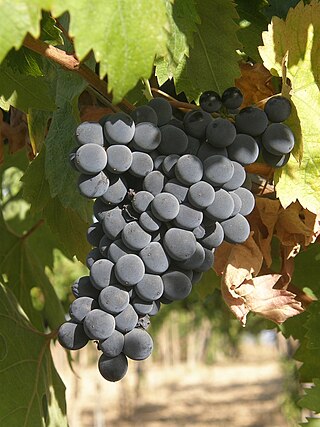
Montepulciano is a red Italian wine grape variety that is most noted for being the primary grape behind the DOCG wines Colline Teramane Montepulciano d'Abruzzo and Offida Rosso; and the DOC wines Montepulciano d'Abruzzo, Rosso Conero, and Rosso Piceno Superiore.

Tuscan wine is Italian wine from the Tuscany region. Located in central Italy along the Tyrrhenian coast, Tuscany is home to some of the world's most notable wine regions. Chianti, Brunello di Montalcino and Vino Nobile di Montepulciano are primarily made with Sangiovese grape whereas the Vernaccia grape is the basis of the white Vernaccia di San Gimignano. Tuscany is also known for the dessert wine Vin Santo, made from a variety of the region's grapes. Tuscany has forty-one Denominazioni di origine controllata (DOC) and eleven Denominazioni di Origine Controllata e Garantita (DOCG). In the 1970s a new class of wines known in the trade as "Super Tuscans" emerged. These wines were made outside DOC/DOCG regulations but were considered of high quality and commanded high prices. Many of these wines became cult wines. In the reformation of the Italian classification system many of the original Super Tuscans now qualify as DOC or DOCG wines but some producers still prefer the declassified rankings or to use the Indicazione Geografica Tipica (IGT) classification of Toscana. Tuscany has six sub-categories of IGT wines today.
Drupeggio is a white Italian wine grape variety that is grown in the Central Italy wine regions of Tuscany and Orvieto. The grape is often confused for the white Tuscan variety Vernaccia di San Gimignano, which is also known under the synonym Canaiolo bianco and may be counted as one and the same in field blends.
Girò is a red Italian wine grape variety that is grown on Sardinia and is used mostly in the production of fortified wines in the Giro di Cagliari Denominazione di origine controllata (DOC). The grape was once widely planted throughout Sardinia but its plantings were decimated when the phylloxera epidemic hit the island at the end of the nineteenth century. At the turn of the 21st century there were 552 hectares of the grape planted throughout Italy, mostly in the Sardinian provinces of Cagliari and Oristano.
Pascale di Cagliari is a red Italian wine grape variety that is grown in Sardinia.
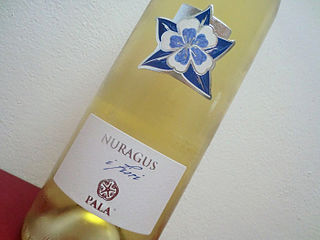
Nuragus is a white Italian wine grape variety that is grown in Sardinia. It is the principle variety between the Denominazione di origine controllata wine Nuragus di Cagliari. The grape has a long history on the island with ampelographers believing that the variety was likely introduced to the area by the Phoenicians. While the grape is still widely planted in Sardinia its numbers began to dwindle in the late 20th century, falling by 50% during the 1980s alone to a total of 8,700 hectare in 1990. Today it is mostly found in the southern part of the island between Cagliari and Oristano on the hot Campidano plain.

Francesco Ciusa was an Italian sculptor.
Albaranzeuli bianco is a white Italian wine grape variety that is grown primarily in Sardinia. Ampelographers use to believe that the grape was originally Spanish in origin and was introduced to the island when it was ruled by the Crown of Aragon. Recent DNA profiling has suggested that the grape may have originated on the island as a crossing between the red Sardinian wine grape Girò and the Spanish table grape Molinera, known locally as Pansa Rosa di Málaga and distinct from the Veneto wine grape Molinara that is used in Amarone. A pink skinned grape known as Albaranzeuli nero is also found in Sardinia but its exact relationship to Albaranzeuli bianco is not yet clear.
Albaranzeuli nero is a red Italian wine grape variety that is primarily found in Sardinia. The grape is often confused with the red Sardinian grape Girò which is believed to be a parent variety of the white grape Albaranzeuli bianco. However recent DNA profiling has not established a direct link between Albaranzeuli nero and either Girò or Albaranzeuli bianco.

The Marquisate of Oristano was a marquisate of Sardinia that lasted from 1410 until 1478
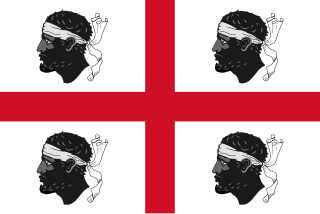
The Kingdom of Sardinia was a feudal state in Southern Europe created in the early 14th century and a possession of the Crown of Aragon first and then of the Spanish Empire until 1708, then of the Habsburgs until 1717, and then of the Spanish Empire again until 1720.
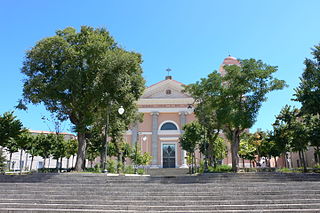
Frà Antonio Cano (1779–1840) was a sculptor, architect, and lay friar of the Kingdom of Sardinia.